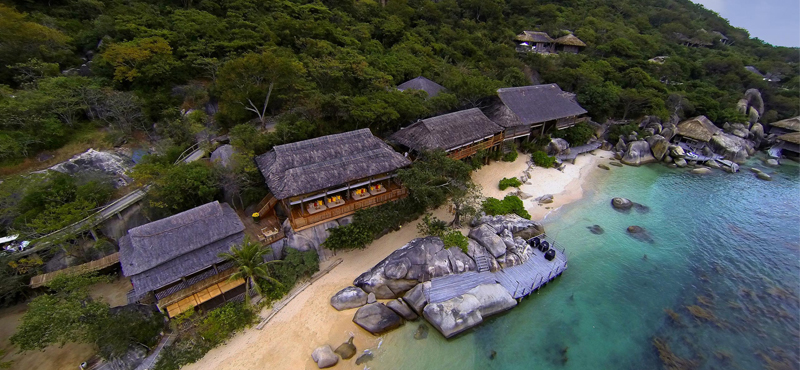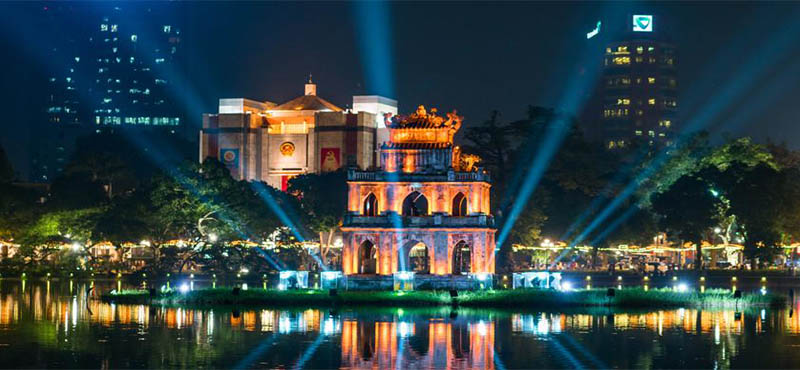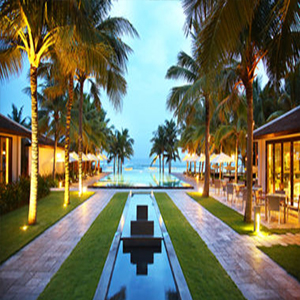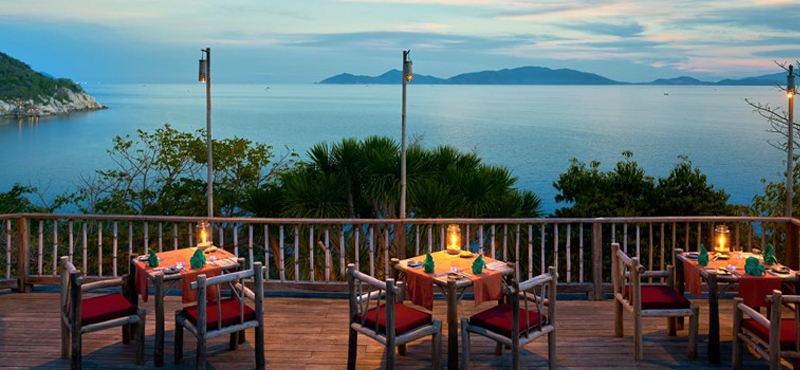Best Time to Visit Vietnam
From the frenetic energy of Hanoi’s bustling Old Quarter to the serene limestone islands of Halong Bay, Vietnam offers a blend of vibrant cityscapes and tranquil landscapes for every type of explorer.
Its long, S-shaped coastline is dotted with picturesque beaches and coastal towns, while inland, the lush green mountains and rice fields provide breathtaking views. Whether your ideal honeymoon involves wandering through ancient temples, tasting the vibrant street food, or cruising along the Mekong Delta, you’re sure to find an activity that makes your romantic trip extra special.
The country stretches over 1,000 kilometres from north to south, resulting in a diverse climate. Whether you’re chasing the cool mountain air in Sapa, enjoying the pleasant warmth of Central Vietnam’s beaches, there’s always an ideal season to visit.
Here’s a month-by-month overview of the weather and events in Vietnam:
Visiting Vietnam in January
In January, the north is cool and dry, with temperatures up to 22°C, making it a pleasant time to explore cities like Hanoi and Ha Long Bay. Central Vietnam enjoys mild conditions with occasional rain and temperatures around 25°C. Meanwhile, the south remains warm and dry, with temperatures of 30°C, perfect for beach activities.
A highlight of this month is the Tet Holiday, also known as the Vietnamese Lunar New Year, which usually occurs in late January or early February. Tet is the most important and widely celebrated holiday in the country, marking the arrival of spring and the beginning of a new lunar year. The festivities are vibrant, with streets adorned with red lanterns, flowers, and festive decorations. Families gather together, exchange gifts, and enjoy traditional foods like bánh ch?ng (sticky rice cake) and th?t kho tàu (caramelised pork and eggs).

Visiting Vietnam in February
In February, Vietnam generally enjoys settled and pleasant weather across the country, with average temperatures hovering around 23°C. For those seeking a beach holiday, the central and southern regions offer the best conditions, with warmer temperatures and plenty of sunshine. Coastal destinations like Da Nang, Nha Trang, and Phu Quoc are particularly inviting, offering pristine beaches and clear waters perfect for swimming, sunbathing, and water sports. The country remains lively with the continuation of the Tet Holiday festivities.
Visiting Vietnam in March
As March progresses, temperatures in central and southern Vietnam continue to climb, reaching highs of around 29°C. In contrast, the northern regions maintain cooler, more temperate conditions, so it should be comfortable enough to explore the country’s natural attractions. This is an excellent time for hiking in the lush, green hills of Sapa or Hanoi’s bustling old quarter.

Visiting Vietnam in April
April remains one of the prime months to visit Vietnam, offering warm and pleasant temperatures. However, as the month progresses, Vietnam begins to transition into its rainy season, which gradual increase in both rainfall and humidity, particularly noticeable in the southern regions. While the northern and central parts of the country continue to enjoy relatively dry and mild conditions, travellers heading south should prepare for unsettled weather.
The Hung Kings’ Temple Festival is one of Vietnam’s most significant celebrations held during April. This festival honours the Hung Kings, who are considered the legendary founders of Vietnam and played a crucial role in the nation’s history. The event takes place at the Hung Kings’ Temple complex in Phu Tho Province, which is believed to be the final resting place of these revered ancestors. One of the central features of the celebration is the grand procession, where locals and pilgrims carry ceremonial objects and offerings in a vibrant parade to the temple. This is followed by traditional music and dance performances, folk games, and historical reenactments.
Visiting Vietnam in May
In May, the northern regions of Vietnam, such as Hanoi and the Sapa Valley, start to experience a noticeable increase in rainfall which marks the start of the wet season. Therefore, you can expect more frequent showers and higher humidity. Meanwhile, central Vietnam remains sunny, with temperatures consistently around 30°C. The central coast, including popular destinations like Da Nang and Hoi An, continues to enjoy clear blue skies and minimal rainfall, making it a perfect time for beachgoers.
Visiting Vietnam in June
June is renowned as the hottest month of the year in Vietnam, so it’s essential to be prepared for sweltering temperatures and high humidity. Central Vietnam, including popular coastal destinations like Da Nang and Nha Trang, enjoys consistently sunny weather during June. In contrast, the southern region of Vietnam is deep into its rainy season. While June brings heavy rainfall, the showers are typically brief and followed by sunny intervals.

Visiting Vietnam in July
If you’re looking to avoid crowds in Vietnam, July is an ideal time to visit. Popular destinations like Ho Chi Minh City and Hanoi are less crowded, and accommodations tend to be more affordable. In the northern regions, including Hanoi and the Sapa Valley, temperatures range from 25°C to 32°C with frequent rain showers. This cooler, rain-kissed climate is perfect for outdoor activities such as hiking and exploring the lush terraced rice fields.
In contrast, central Vietnam, including cities like Da Nang and Hoi An, enjoys sunny and dry weather throughout July, with consistently warm temperatures ideal for beachgoers. The southern part of the country, including Ho Chi Minh City and the Mekong Delta, experiences frequent but brief heavy showers, usually in the late afternoon or evening, leaving the rest of the day clear for sightseeing and exploration.
Visiting Vietnam in August
The northern region experiences warmer weather with fewer rain showers during August, making it a great time for cultural explorations and nature hikes. In central Vietnam, the weather is a mix of dry days and occasional rain, offering some relief from the intense heat. If you’re heading to Con Dao Island, be sure to catch the heartwarming sight of baby green turtles hatching and making their way to the sea in mid-August. In the south, rainfall gradually decreases, and the weather stabilises towards the end of the month, making it a more pleasant time to visit.
Visiting Vietnam in September
September marks the arrival of autumn in northern Vietnam, bringing a refreshing change to the weather with cooler temperatures. The rice terraces in regions like Sapa are particularly stunning at this time of year, turning golden as they reach the harvest stage. In central Vietnam, temperatures begin to cool slightly compared to the peak summer months, however this region enters its monsoon season, where you’re likely experience torrential downpours in the likes of Hoi An. The southern part of Vietnam on the other hand, starts to emerge from the rainy season in September, as the weather becomes more stable and pleasant.
A major highlight of September is the Mid-Autumn Festival (otherwise known as the Moon Festival) is, a vibrant celebration that fills the streets with lantern displays, traditional lion dances, and an array of mooncakes.
Visiting Vietnam in October
October in Vietnam presents a diverse range of weather conditions across the country. In the north, the transition from summer heat brings cooler temperatures, making it an ideal time to explore cities like Hanoi and the picturesque northern highlands. In the south, the risk of typhoons reduces, leading to more stable weather and fewer disruptions.
However, central Vietnam remains embedded in its rainy season throughout October. Frequent showers and the possibility of flooding can impact travel plans and limit outdoor activities in popular destinations like Da Nang and Hoi An. If your holiday plans involve outdoor adventures, it might be wise to avoid central Vietnam during this period.

Visiting Vietnam in November
If you’re looking to avoid the rainy season that has been affecting Central Vietnam in October and through to November, consider heading to the northern regions to enjoy dry and stable weather with abundant sunshine.
As southern Vietnam transitions out of its typhoon season, popular destinations like Phan Thiet and Mui Ne, becomes an ideal escape for sun-seekers. With daytime temperatures comfortably hovering around 26°C, it’s a great opportunity to comfortably relax on the pristine beaches or partake in water sports on the sparkling sea.
This month, the Mekong Delta comes alive with the Oc Om Boc Festival, which celebrates the end of the lunar calendar’s harvest season and the region’s agricultural bounty. The festival features exciting boat races, vibrant traditional music performances, and dazzling lantern displays, which provides visitors with the chance to get involved with local culture.
Visiting Vietnam in December
If you prefer cooler temperatures, December is an excellent time to visit Vietnam. In the northern regions, temperatures dip to a refreshing 15°C to 20°C, creating a crisp and comfortable atmosphere ideal for exploring cities. Central Vietnam also experiences a notable shift in weather during December, with significantly reduced rainfall compared to the previous months. In the southern part of the country, the weather remains warm and dry, offering a quintessential tropical escape. Destinations like Ho Chi Minh City and the islands of Phu Quoc and Con Dao are bathed in sunshine, providing perfect conditions for beach activities.
Vietnam embraces a festive spirit, with Christmas and New Year’s celebrations growing more popular in tourist areas. Cities such as Ho Chi Minh City and Hanoi light up with colourful decorations and vibrant markets, which is sure to make a memorable touch to your Christmas break.
